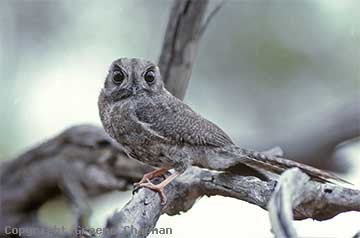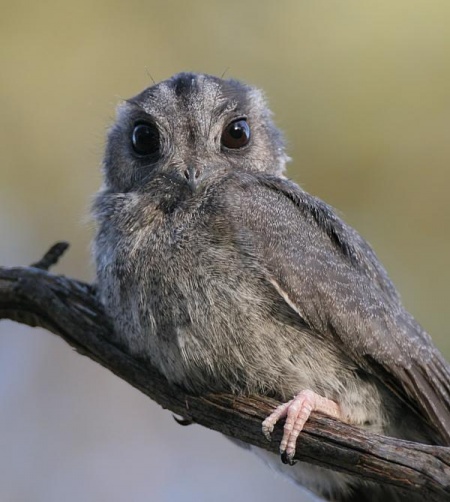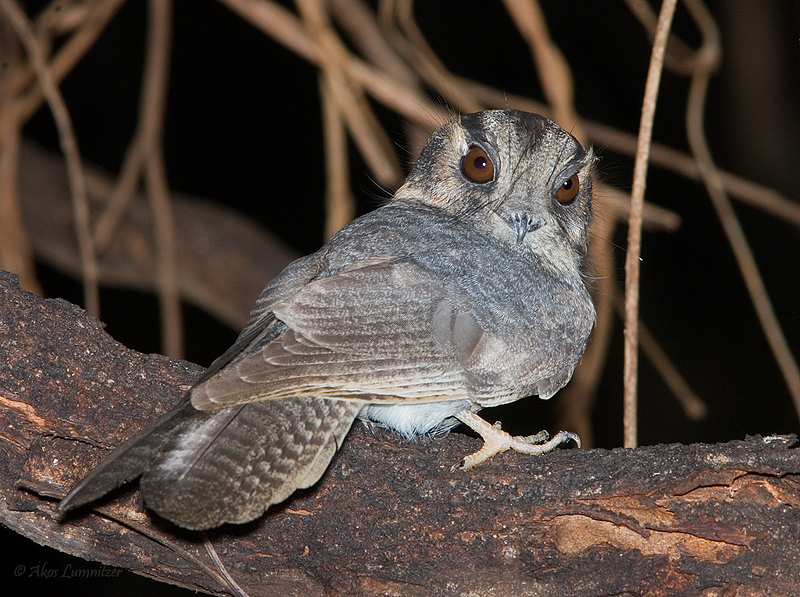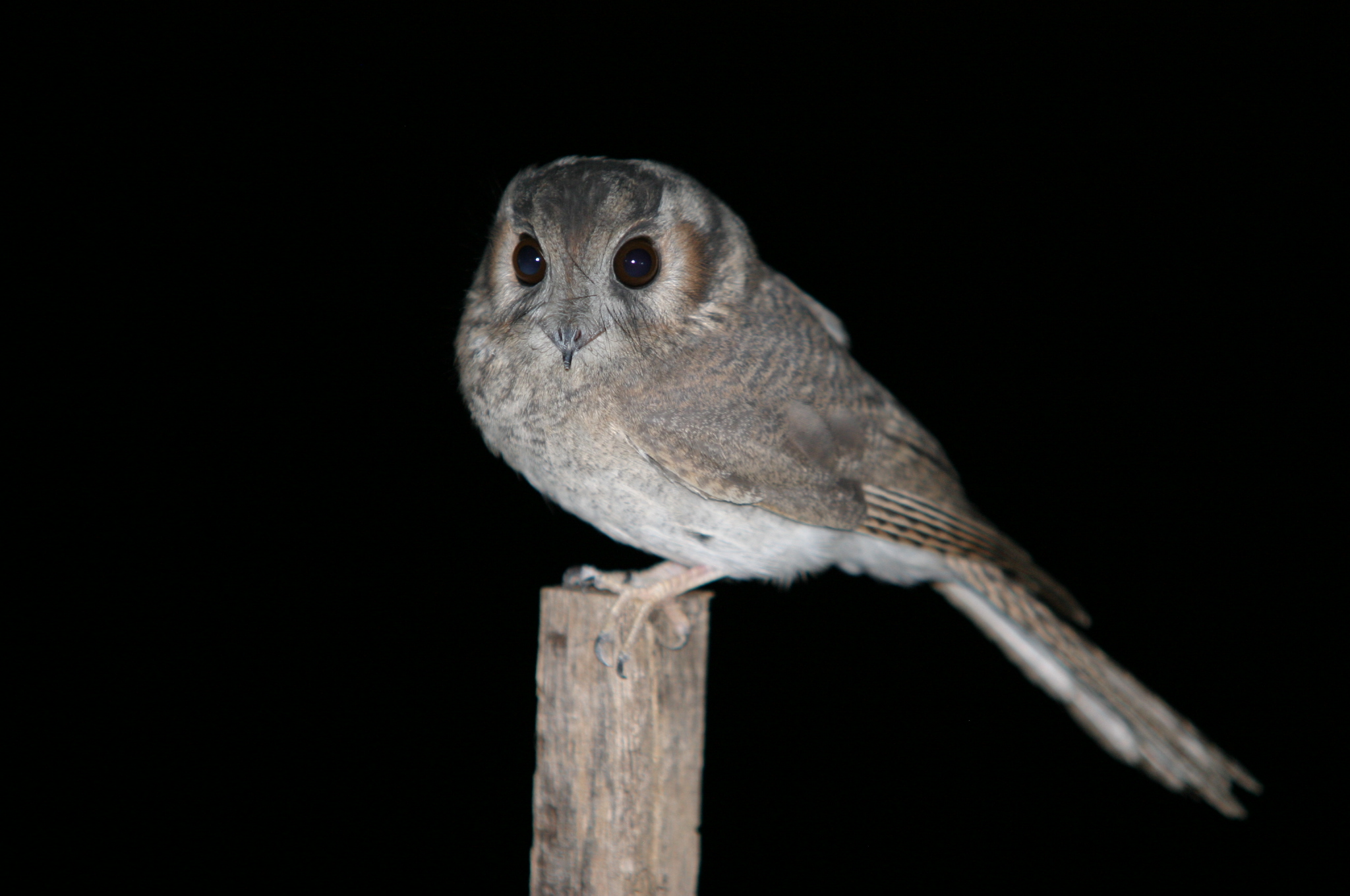
Aegotheles cristatus
TAXONOMY
Caprimulgus cristatus Shaw Smith & Hunter, 1790, New South
Wales. Two subspecies.
OTHER COMMON NAMES
English: Owlet-nightjar, crested owlet-nightjar; French: Йgothиle
d’Australie; German: Baumschwalm; Spanish: Egotelo Australiano.
PHYSICAL CHARACTERISTICS
8.3–10 in (21–25 cm); 1.4–2.1 oz (39–60 g). Upperparts are
dark gray with pales lines and spots; underparts are paler with
narrow brown lines. Sexes often similar but females vary between
a gray morph and a rufous morph (with intermediates).
The extreme rufous morph does not seem to occur in males,
although intermediate males are known.
DISTRIBUTION
Australia, Tasmania, and southeastern New Guinea.
HABITAT
Open forests, woodlands, scrub, and mangroves.
BEHAVIOR
Sedentary in pairs. Roosts by day, usually in tree holes.
FEEDING ECOLOGY AND DIET
Feeds mainly on insects, most of which are caught by swooping
(sallying) to ground from low perch.
REPRODUCTIVE BIOLOGY
Nests in hole, usually in tree. Clutches of two to five white
eggs laid between August and December. Young hatch with
white down which is replaced by gray down before juvenal
feathers grow. Incubation period 25–27 days, fledging period
usually 21–29 days.
CONSERVATION STATUS
Not threatened, although suffers mortality from domestic cats
and road kills.
SIGNIFICANCE TO HUMANS
Mentioned in the legends of aboriginal Australians.
Other popular Animals
Photo Gallery of - Australian owlet-nightjar




 Animalia Life
Animalia Life